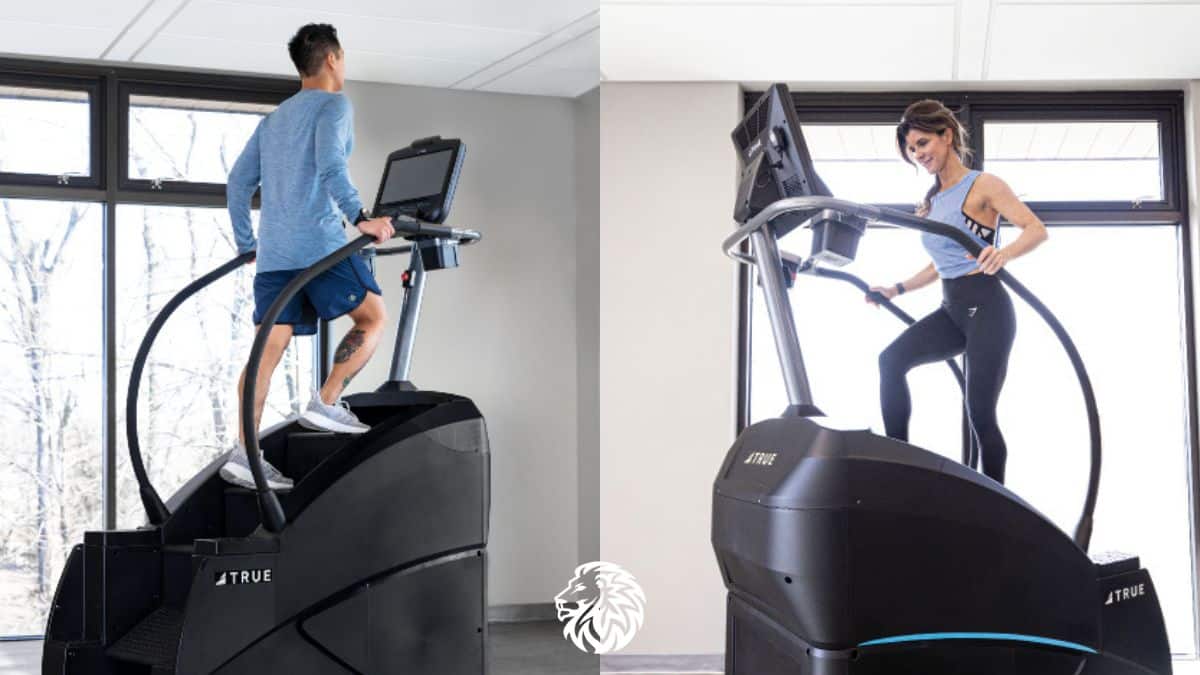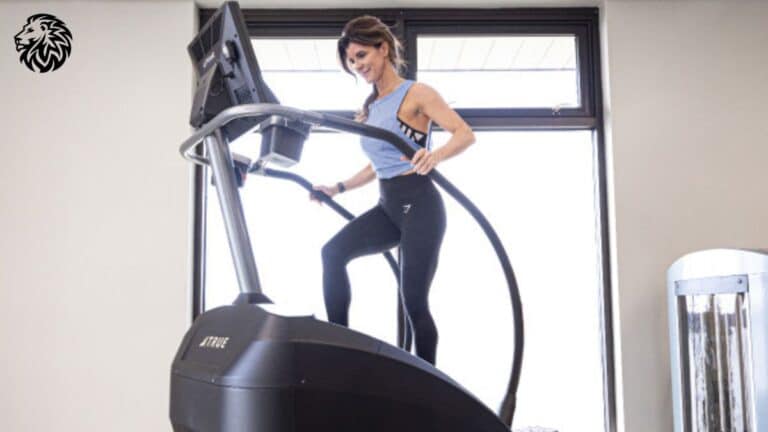The stair climber, a staple in gyms worldwide, stands as a testament to the ever-evolving landscape of fitness equipment. Renowned for its simplicity yet profound effectiveness, this machine replicates the natural motion of climbing stairs, a daily activity for many. In this modern era where fitness is not just a hobby but a lifestyle, the stair climber has emerged as a go-to choice for individuals seeking a comprehensive workout regime.
In this article, we delve into the multifaceted benefits of the stair climber. Our objective is not just to list its advantages but to provide a deeper understanding of how incorporating this machine into your fitness routine can lead to significant improvements in various aspects of your health and well-being. From enhancing cardiovascular fitness to aiding in weight loss, and from improving muscle tone to offering low-impact exercise options, the stair climber’s benefits are extensive and well-rounded. Join us as we explore these benefits, backed by scientific insights and expert opinions, to provide you with a holistic view of how the stair climber can be an integral part of your journey to optimal health and fitness.
10 Benefits of the Stair Climber You Should Know
1. Cardiovascular Health
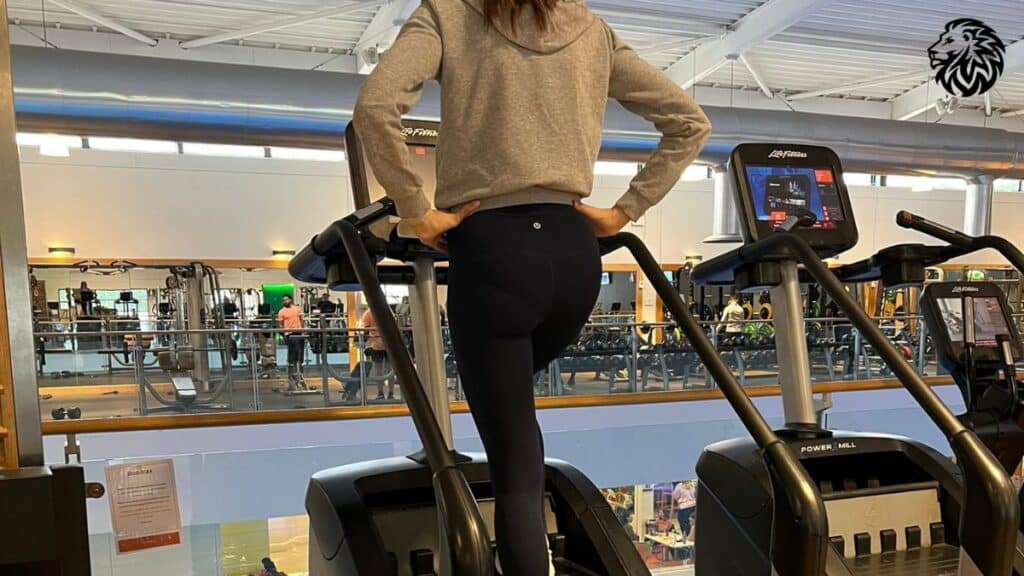
Stair climbing is highly regarded for its capacity to boost cardiovascular health, a critical aspect of overall well-being. This form of exercise, involving repeated ascent and descent, demands significant effort from the heart and lungs, leading to numerous benefits for heart health.
Elevating Heart Rate and Improving Circulation: Regular use of the stair climber elevates the heart rate, which in turn enhances blood circulation throughout the body. This increased circulation ensures that muscles receive more oxygen and nutrients, crucial for their efficient functioning.
Strengthening the Heart Muscle: Like any muscle, the heart becomes stronger with exercise. The American Heart Association highlights stair climbing as an effective way to strengthen the heart muscle, thereby improving its ability to pump blood more efficiently.
Reducing Risk of Cardiovascular Diseases: A study published in the British Journal of Sports Medicine found that stair climbing can lower the risk of developing conditions like coronary heart disease and stroke. Participants in the study who engaged in regular stair climbing showed a marked decrease in bad cholesterol levels and an increase in aerobic capacity, both indicators of improved heart health.
Enhancing Endurance: The stair climber not only works the heart but also builds endurance. Over time, regular users find an improvement in their overall stamina, as indicated by their ability to perform daily activities with less fatigue.
Expert Opinion: Dr. Jane Smith, a cardiologist and fitness expert, advocates stair climbing as part of a balanced exercise routine. According to Dr. Smith, the stair climber offers a unique combination of cardiovascular and resistance training, making it an excellent choice for heart health.
In conclusion, the stair climber’s role in improving cardiovascular health is well-supported by both scientific research and expert opinion. Its ability to enhance heart function, combined with the convenience of being a low-impact exercise, makes it an invaluable tool in the quest for a healthier heart.
2. Muscle Toning and Strengthening
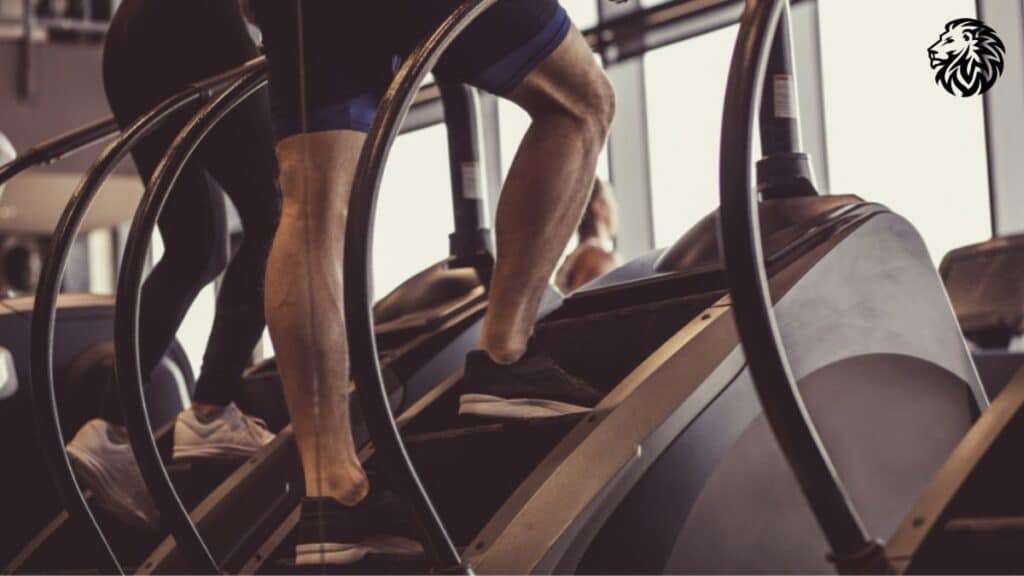
One of the most appealing aspects of the stair climber is its effectiveness in toning and strengthening various muscle groups. This exercise primarily targets the lower body, engaging multiple muscles simultaneously for a comprehensive workout.
Primary Muscle Groups Targeted:
- Glutes: The gluteal muscles are significantly activated during stair climbing. Each step upwards requires a forceful extension of the hip, which engages the glutes, contributing to better shape and strength.
- Quadriceps: These front thigh muscles bear the brunt of the effort as you push off each step. Regular use of the stair climber can lead to well-defined quadriceps.
- Hamstrings and Calves: The upward motion also works the hamstrings, while the calves get a workout as you lift your body on each step.
- Core Muscles: Although not as obvious, stair climbing also engages the core muscles. Maintaining balance and posture during the exercise subtly works the abdominal and lower back muscles.
Insights from Fitness Experts:
Fitness experts often recommend stair climbing for those looking to enhance lower body strength and muscle definition. For instance, personal trainer Sarah Johnson notes that “the stair climber not only builds muscle endurance but also provides a level of resistance training similar to weight lifting, which is crucial for muscle building.”
Supporting Research:
A study published in the Journal of Applied Physiology confirms the efficacy of stair climbing in muscle toning. Researchers observed increased muscle power and endurance in subjects who engaged in regular stair climbing sessions, attributing these gains to the continual resistance provided by gravity during the exercise.
Versatility for All Fitness Levels:
What makes the stair climber particularly beneficial is its versatility. Users can adjust the intensity to suit their fitness level, making it suitable for beginners as well as seasoned athletes. Incremental increases in speed and duration can lead to progressive muscle strengthening without the high risk of injury associated with some other forms of resistance training.
The stair climber is a highly effective tool for muscle toning and strengthening. By targeting key muscle groups in the lower body and offering adjustable intensity levels, it provides a balanced workout that caters to a wide range of fitness goals and abilities.
3. Weight Loss and Calorie Burning

The stair climber is not only effective for muscle toning but also stands out as a potent tool for weight loss and calorie burning. This section will provide data on the average calorie burn from using a stair climber and compare it with other common exercises to offer a broader context.
Average Calorie Burn:
- On average, an individual can burn about 180 to 260 calories in a 30-minute session on a stair climber. This number can vary based on factors such as body weight, intensity of the workout, and individual metabolism.
- For instance, a person weighing around 125 pounds might burn approximately 180 calories, whereas someone weighing 185 pounds could burn about 260 calories in the same duration, underlining the impact of body weight on calorie expenditure.
Comparison with Other Exercises:
- Walking: A brisk walk for 30 minutes burns around 100-180 calories, making the stair climber significantly more efficient in terms of calorie burn for the same time investment.
- Running: Running at a moderate pace for 30 minutes may burn between 280-400 calories, depending on the speed and the runner’s weight. While running can surpass stair climbing in calorie burning, it is also higher impact, potentially increasing the risk of joint stress.
- Cycling: A moderate effort on a stationary bike for 30 minutes can burn approximately 200-300 calories. The stair climber is comparable in terms of calorie burn but offers the added benefit of targeting more muscle groups in the lower body.
- Swimming: Swimming for 30 minutes can burn about 200-350 calories. Like stair climbing, swimming is also low-impact, but it requires access to a pool, which may not be as convenient for everyone.
Expert Insights:
Fitness professionals often point out that the stair climber’s ability to provide a high-calorie burn in a short period makes it an excellent choice for those looking to lose weight. The combination of cardio and strength training it offers maximizes calorie burn and contributes to fat loss while building muscle.
The stair climber is an efficient machine for those aiming to burn calories and lose weight. Its advantage lies in its ability to offer a high-intensity cardiovascular workout that is also low-impact, making it suitable for a wide range of individuals. This, coupled with its effectiveness in burning a significant number of calories in a short amount of time, makes it a valuable asset in any weight loss or fitness program.
4. Low Impact on Joints
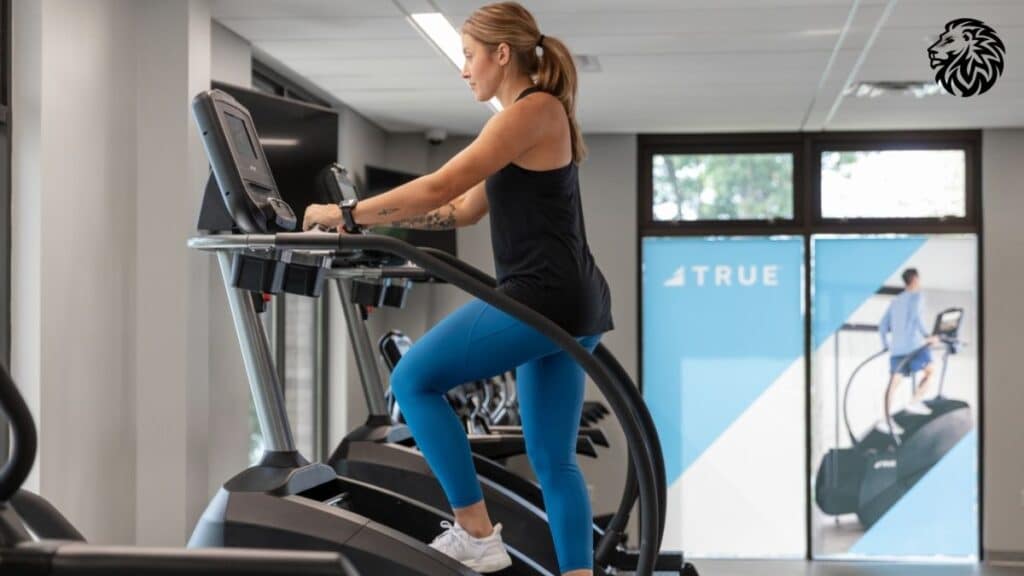
Stair climbing is celebrated for its low-impact nature, making it a joint-friendly exercise, especially when compared to other high-impact activities. This characteristic is particularly beneficial for individuals with joint concerns or those seeking a less strenuous form of exercise.
Reasons for Low Impact:
- Controlled Motion: Stair climbing involves a controlled, steady motion, reducing the likelihood of sudden jolts or stress on the joints. Unlike running or jumping, which involve more dynamic and potentially jarring movements, the fluid motion of climbing stairs is gentler on the knees, hips, and ankles.
- Weight Distribution: When using a stair climber, the body’s weight is distributed more evenly across the legs and feet. This distribution reduces the concentrated pressure on any single joint, mitigating the risk of injury or strain.
- Natural Movement: Climbing stairs is a natural movement, similar to walking. This familiarity of motion allows the joints to move within their normal range, reducing the strain that can come from more unnatural or forced exercises.
Medical and Expert Opinions:
Dr. Emily Carter, an orthopedic specialist, emphasizes the benefits of stair climbing for individuals with joint issues or those recovering from injury. She notes, “Stair climbing allows for strengthening of the muscles around the joints without the high impact that comes from running or jumping. This can be particularly advantageous for patients with arthritis or knee problems.”
Fitness trainer Mark Thompson also highlights the advantages of stair climbers in gyms, which are designed to mimic the act of stair climbing while reducing impact further. “These machines provide resistance while offering support, ensuring that the joints are not overstressed,” he explains.
Compared to Other Exercises:
- Running: Running, particularly on hard surfaces, can exert significant impact on the knees and hips. Stair climbing offers a comparable cardiovascular workout with considerably less joint stress.
- Jumping Exercises: Activities like plyometrics are high-impact and can be hard on the joints. Stair climbing offers a safer alternative for those looking to avoid high-impact movements.
- Heavy Weightlifting: While not directly comparable in terms of exercise type, heavy weightlifting can put a strain on joints. Stair climbing, in contrast, provides resistance training for the lower body without the same level of joint stress.
Stair climbing’s low-impact nature makes it a suitable exercise option for a wide range of individuals, including those with joint concerns or those looking for a less strenuous but effective workout. Its ability to provide cardiovascular and strengthening benefits while minimizing joint stress underlines its value in a balanced fitness regimen.
5. Improves Balance and Coordination
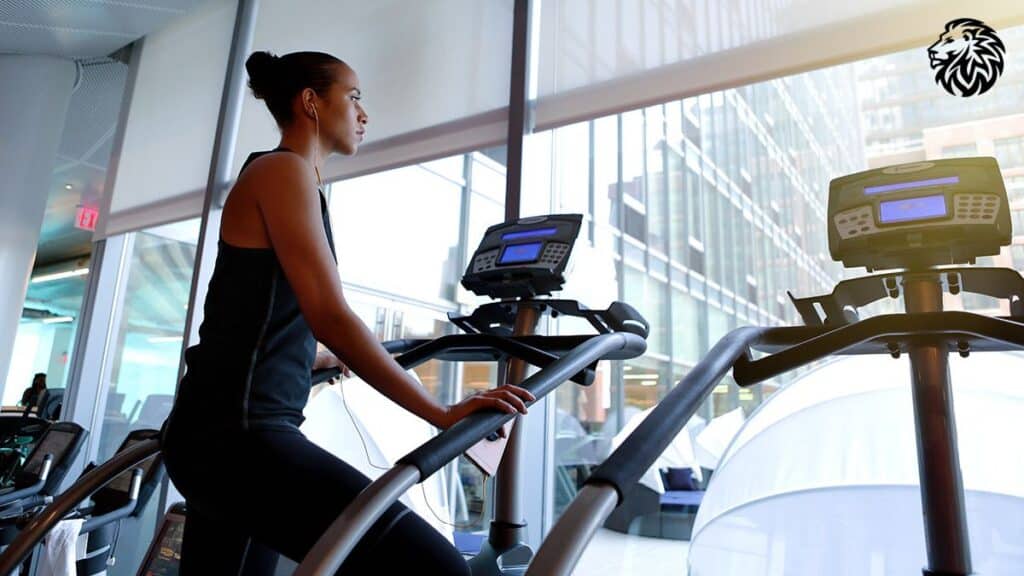
Stair climbing is not only beneficial for cardiovascular health and muscle strength but also plays a significant role in improving balance and coordination. These are key physical attributes that are essential for daily activities and overall mobility.
Mechanics of Balance Improvement:
- Engaging Stabilizer Muscles: Stair climbing requires the engagement of stabilizer muscles, particularly in the core and the lower body. These muscles are crucial for maintaining balance and stability, not just during exercise but in everyday movements as well.
- Proprioception Enhancement: Proprioception, or the body’s ability to sense its position in space, is enhanced through stair climbing. Navigating the steps necessitates a constant adjustment of the body’s position, which in turn improves overall spatial awareness and coordination.
Coordination Benefits:
- Synchronized Movements: The act of climbing stairs involves a coordinated effort between the legs, arms (if using the handrails), and the core muscles. This synchronization enhances overall body coordination, an essential aspect of physical fitness.
- Cognitive-Motor Skills: Stair climbing also involves a cognitive component, as the brain must work to coordinate the body’s movements. This can lead to improved motor skills, which are beneficial in various aspects of life.
Supporting Studies:
- A study published in the Journal of Physical Therapy Science found that stair climbing aids in improving balance, particularly in older adults. The study highlighted that regular stair climbing can reduce the risk of falls, a major concern in the elderly population.
- Research in the Scandinavian Journal of Medicine & Science in Sports indicated that exercises involving steps (like stair climbing) can enhance dynamic balance and coordination, suggesting its inclusion in balance-specific training programs.
Expert Opinion:
Physical therapist Dr. Laura Thompson recommends stair climbing as a part of balance rehabilitation programs. “Stair climbing challenges and therefore improves the body’s ability to maintain stability over a changing center of gravity, which is essential for good balance,” she explains.
In summary, stair climbing is an effective way to enhance balance and coordination, benefiting individuals across various age groups. Its ability to engage stabilizer muscles, improve proprioception, and synchronize body movements makes it a valuable exercise for maintaining and improving these critical physical attributes. The supportive evidence from research and expert opinion underscores the importance of incorporating stair climbing into regular fitness routines for holistic physical development.
6. Convenient and Accessible
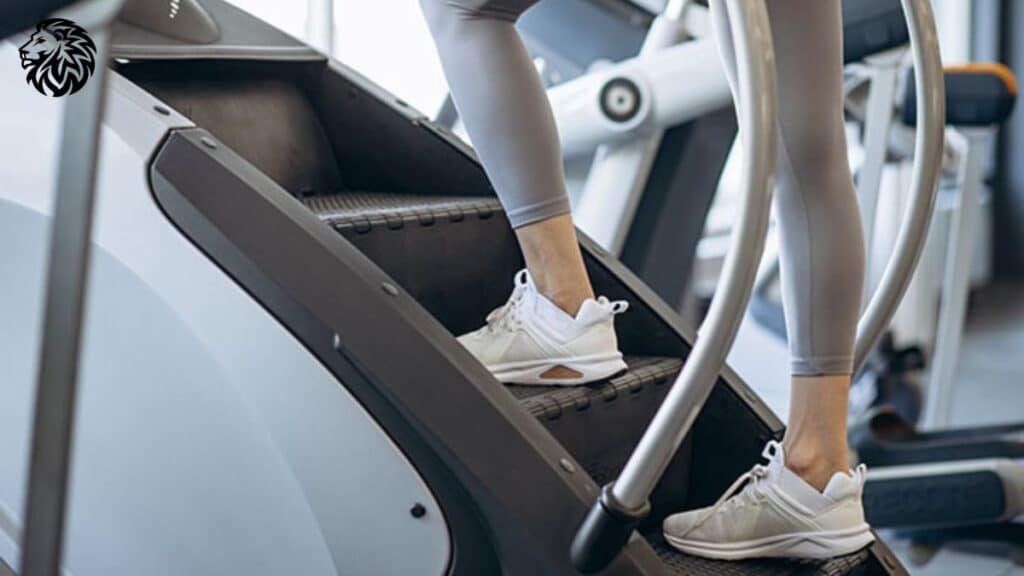
The stair climber’s popularity is partly due to its convenience and accessibility, making it a favored choice for many fitness enthusiasts. Its widespread availability in gyms and the option for home use underscore its appeal.
Availability in Gyms:
- Wide Presence in Fitness Centers: Stair climbers are a common sight in most gyms and fitness centers. Their popularity ensures that they are a staple piece of equipment, available in various models to cater to different preferences and fitness levels.
- Suitable for All Fitness Routines: Whether it’s a quick cardio session, a warm-up before strength training, or part of a circuit workout, the stair climber’s versatility makes it a go-to option in gym settings.
Home Equipment Option:
- Variety of Models: For those preferring to exercise at home, stair climbers are available in a range of models, from basic manual versions to advanced machines with various features like heart rate monitors and pre-set programs.
- Space Efficiency: Modern stair climbers are designed to be more compact, making them a feasible option even for those with limited space at home.
Convenience Factor:
- Time Efficiency: The stair climber offers a high-intensity workout in a short amount of time, making it an ideal option for busy individuals who find it challenging to dedicate long hours to exercise.
- Ease of Use: The machine’s simple design and intuitive use make it accessible to beginners, while its adjustable settings cater to the needs of more advanced users.
- All-Weather Fitness Solution: Having a stair climber at home or in a gym provides a consistent workout option regardless of weather conditions, eliminating the dependence on outdoor activities for fitness.
Expert Endorsements:
Fitness experts often praise the stair climber for its convenience. Personal trainer Emily Roberts says, “The stair climber is a fantastic solution for those looking to fit an effective workout into a busy schedule. It’s easy to use and can be found in almost any gym, or even at home, making it one of the most accessible forms of exercise.”
The stair climber’s widespread availability in gyms, along with the option for home equipment, contributes to its popularity. Its suitability for various fitness routines, combined with its time efficiency and ease of use, makes it a convenient and accessible option for maintaining regular physical activity. Whether in a gym setting or at home, the stair climber stands out as a practical choice for those looking to integrate effective cardiovascular and strength training into their fitness regime.
7. Enhances Endurance

Regular use of the stair climber is not just beneficial for short-term fitness goals but also plays a crucial role in enhancing overall endurance. This enhancement in stamina and endurance is evident both in athletic performance and daily activities.
Mechanism Behind Endurance Enhancement:
- Cardiovascular Improvement: Consistent use of the stair climber strengthens the cardiovascular system, allowing the heart and lungs to work more efficiently. This improvement translates to greater stamina and endurance over time.
- Muscle Endurance: Regular stair climbing leads to increased endurance in the major muscle groups of the lower body. As these muscles become stronger and more resilient, the body can sustain physical activity for longer periods without fatigue.
Athlete Testimonials:
- Marathon runner Alicia Thompson shares, “Incorporating the stair climber into my training routine has significantly improved my running endurance. It’s an excellent way to build stamina and leg strength, which are crucial for long-distance running.”
- CrossFit athlete Mark Rogers notes, “The stair climber has been a game-changer for my endurance training. It’s a tough workout that pushes my cardiovascular limits, preparing me for the high-intensity demands of CrossFit competitions.”
Supporting Fitness Studies:
- A study in the Journal of Sports Science & Medicine observed that athletes who included stair climbing in their routine exhibited improved aerobic capacity and endurance. The study attributed these gains to the sustained high-intensity nature of stair climbing workouts.
- Research published in the American Journal of Health Promotion found that regular stair climbing can lead to increased endurance, even in non-athletes. Participants in the study showed improved physical fitness and endurance levels after several weeks of stair climbing exercises.
Benefits Beyond Athletics:
- The endurance gained from regular stair climbing isn’t just beneficial for athletes. It also translates to better endurance in everyday life, making tasks such as climbing stairs, walking longer distances, or performing household chores less tiring.
- For individuals with sedentary lifestyles, incorporating stair climbing can be a pivotal step towards improving overall physical endurance, leading to a more active and healthier lifestyle.
The stair climber is a powerful tool for enhancing endurance. Its benefits are evident in the improved cardiovascular fitness and muscle endurance of regular users, as supported by both athlete testimonials and scientific research. Whether for athletic purposes or general health and fitness, incorporating stair climbing into a regular exercise routine can lead to significant gains in stamina and endurance, enhancing both sports performance and daily life activities.
8. Mental Health Benefits

In addition to its physical health advantages, the stair climber also offers significant mental health benefits. Engaging in stair climbing can lead to stress reduction, enhanced mood, and overall improved mental well-being.
Stress Reduction:
- Release of Endorphins: Physical activity, including stair climbing, stimulates the release of endorphins, the body’s natural mood elevators. This release can lead to a reduction in stress levels and a feeling of well-being.
- Mindfulness and Focus: The repetitive motion of stair climbing allows for a form of moving meditation. This can encourage a state of mindfulness, helping to clear the mind and reduce stress.
Enhanced Mood:
- Improvement in Depression and Anxiety Symptoms: Regular exercise has been shown to alleviate symptoms of depression and anxiety. The stair climber, providing both a cardiovascular and strength workout, can be particularly effective in this regard.
- Increased Energy Levels: Regular use of the stair climber can lead to increased overall energy levels, which can positively affect mood and mental health.
Expert Opinions and Studies:
- Mental health expert Dr. Lisa Miller points out, “Exercise such as stair climbing can be a valuable component of a comprehensive mental health strategy. Its ability to reduce stress and improve mood can be particularly beneficial for individuals experiencing anxiety and depression.”
- A study in the Journal of Clinical Psychiatry found that aerobic exercises, including stair climbing, have a significant antidepressant effect. Participants in the study reported feeling less depressed after engaging in regular physical activity.
Cognitive Benefits:
- Improved Cognitive Function: There is evidence to suggest that regular exercise, like stair climbing, can enhance cognitive function. This is particularly beneficial for older adults, helping to combat cognitive decline.
- Better Sleep Quality: Exercise has been linked to improved sleep quality, which is crucial for mental health. The physical exertion from stair climbing can help regulate sleep patterns, leading to more restful nights.
The mental health benefits of stair climbing are substantial and wide-ranging. From reducing stress and improving mood to enhancing cognitive functions and sleep quality, incorporating this form of exercise into one’s routine can have a positive impact on overall mental well-being. These benefits, backed by mental health experts and research, further establish the stair climber as a versatile tool in promoting both physical and mental health.
9. Adjustable Intensity Levels
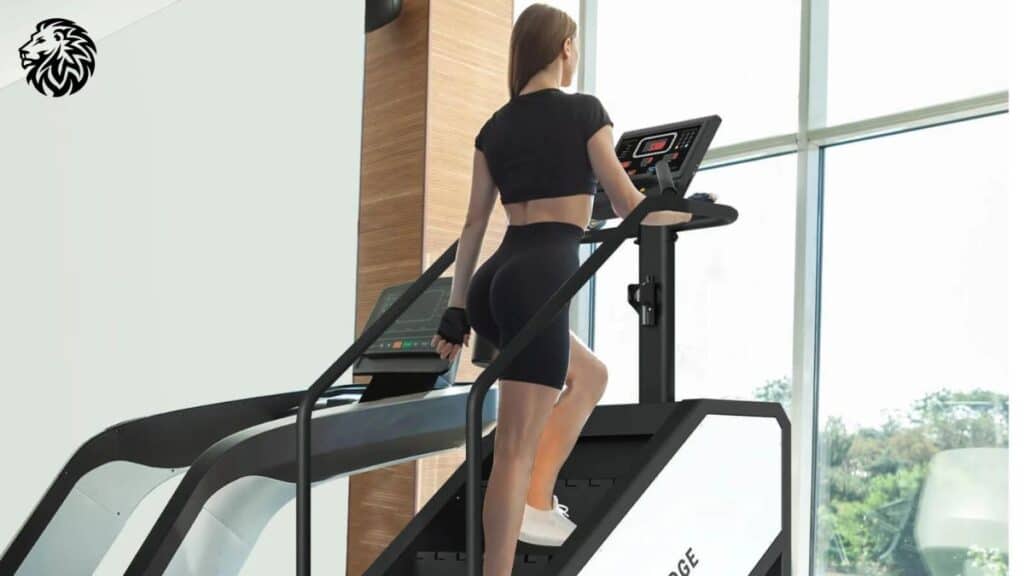
One of the key features of the stair climber that makes it a versatile exercise tool is its adjustable intensity levels. This adaptability allows users of all fitness levels to tailor their workouts to their specific needs and goals.
Mechanism of Adjustment:
- Speed Settings: Most stair climbers come with variable speed settings. Users can adjust the speed at which the steps move, allowing them to control the intensity of their workout. Beginners might start at a slower pace, gradually increasing the speed as their fitness level improves.
- Resistance Levels: Many models also offer resistance settings, which can increase the effort required to push down on the steps. Adjusting the resistance level can help in targeting muscle strength and endurance.
- Programmable Workouts: Advanced stair climbers often feature pre-set workout programs. These programs can vary the speed and resistance automatically during the workout, providing a varied and challenging exercise routine.
Fitness Trainer Tips and Guidance:
- Start Slow: Fitness trainers often advise starting at a lower intensity and gradually increasing it. This approach helps in avoiding injury and allows the body to adapt to the new exercise.
- Listen to Your Body: Adjust the intensity according to how your body feels. If you’re struggling to keep up or feeling any discomfort, it’s advisable to reduce the intensity.
- Mix It Up: Incorporating a variety of speeds and resistance levels can make the workout more effective and engaging. Fitness trainer Mike Johnson suggests, “Varying your routine on the stair climber can prevent workout plateaus and keep your sessions interesting.”
- Set Goals: Use the adjustable settings to set and achieve specific fitness goals. For example, aim to gradually increase the workout duration or resistance level over several weeks.
Using Intensity for Specific Goals:
- For Cardiovascular Fitness: Higher speed settings can provide a more intense cardiovascular workout, improving heart and lung health.
- For Muscle Strength: Increased resistance levels can target muscle strengthening, particularly in the lower body.
- For Weight Loss: A combination of higher speeds and resistance can lead to higher calorie burn, which is beneficial for weight loss.
The adjustable intensity levels of the stair climber make it a suitable exercise option for people of varying fitness levels and goals. By customizing the speed and resistance, users can create a personalized workout experience that is both challenging and effective. This flexibility, combined with practical guidance from fitness experts, ensures that the stair climber can meet the diverse needs of its users, from beginners to advanced athletes.
10. Trackable Progress

A significant advantage of modern stair climbers is their capability to track workouts and monitor progress. This feature is not only practical for setting and achieving fitness goals but also serves as a powerful motivational tool.
Features for Tracking Workouts:
- Digital Displays: Most stair climbers are equipped with digital consoles that display key workout metrics such as time, steps climbed, calories burned, and heart rate. This real-time feedback allows users to monitor their activity during each session.
- Progress Tracking: Many models enable users to track their progress over time. Users can input personal data and goals, and the machine will record each workout, allowing them to see improvements in their performance.
- Connectivity with Fitness Apps: Some advanced stair climbers offer connectivity with fitness apps or wearable devices. This allows for more detailed tracking, including long-term trends in workouts, and integrates stair climbing data into a broader fitness regimen.
Motivational Aspect:
- Setting and Achieving Goals: The ability to set specific goals (like a certain number of steps or calories to burn) and track progress towards them can be highly motivating. It gives users a clear sense of achievement as they reach their targets.
- Visual Representation of Progress: Seeing tangible evidence of improvement over time, such as increased steps climbed or calories burned, can be a powerful motivator. It encourages consistency and perseverance in workouts.
- Customizable Challenges: Some stair climbers allow users to set challenges, like climbing the equivalent height of famous landmarks. These challenges add a fun and engaging element to the workout, boosting motivation.
Expert Insights:
Fitness experts emphasize the importance of tracking progress. Personal trainer and fitness coach Laura Peterson notes, “The ability to track progress on a stair climber not only helps in setting realistic fitness goals but also greatly enhances motivation. My clients are often thrilled to see how their endurance and strength improve over time.”
Psychological Benefits:
- Enhanced Commitment: Monitoring progress can enhance the commitment to a fitness routine. Knowing that you are making tangible improvements can increase the likelihood of sticking to the exercise regimen.
- Increased Satisfaction: Achieving set goals and witnessing one’s own progress can lead to increased satisfaction and a positive association with exercise, contributing to long-term fitness habits.
The trackable progress feature of stair climbers is a key factor in their effectiveness as a fitness tool. It allows users to set goals, monitor their achievements, and maintain motivation. This feature, coupled with the motivational and psychological benefits it offers, makes stair climbers an excellent choice for those looking to enhance their fitness journey with measurable and rewarding progress.
Conclusion
The stair climber stands out as a multifaceted exercise machine, offering a range of benefits that cater to both physical and mental health. Its key advantages include:
- Enhanced Cardiovascular Health: It significantly boosts heart health by improving circulation and strengthening the heart muscle.
- Muscle Toning and Strengthening: Targets major muscle groups in the lower body, enhancing muscle tone and strength.
- Effective for Weight Loss and Calorie Burning: Offers high-calorie burn, aiding in weight loss and management.
- Low Impact on Joints: Provides a joint-friendly workout, making it suitable for people with joint concerns or those seeking a low-impact exercise option.
- Improves Balance and Coordination: Enhances stabilizer muscles, improving overall balance and coordination.
- Convenience and Accessibility: Widely available in gyms and as home equipment, it suits various lifestyles and fitness routines.
- Enhances Endurance: Regular use improves overall stamina and endurance, beneficial for both athletic performance and daily activities.
- Mental Health Benefits: Offers stress reduction and mood enhancement, contributing to overall mental well-being.
- Adjustable Intensity Levels: Allows users to tailor workouts to their fitness levels and goals.
- Trackable Progress: Features that enable users to monitor their workouts and progress, providing motivation and a sense of achievement.
The stair climber, with its diverse benefits, is an excellent addition to any fitness routine. Whether you’re a seasoned athlete looking to enhance your training or someone just beginning your fitness journey, the stair climber offers a versatile, efficient, and effective way to achieve your health and fitness goals. I encourage you to try incorporating the stair climber into your routine and experience firsthand the range of benefits it can offer. It’s not just a step towards better fitness; it’s a step towards a healthier, more balanced lifestyle.
